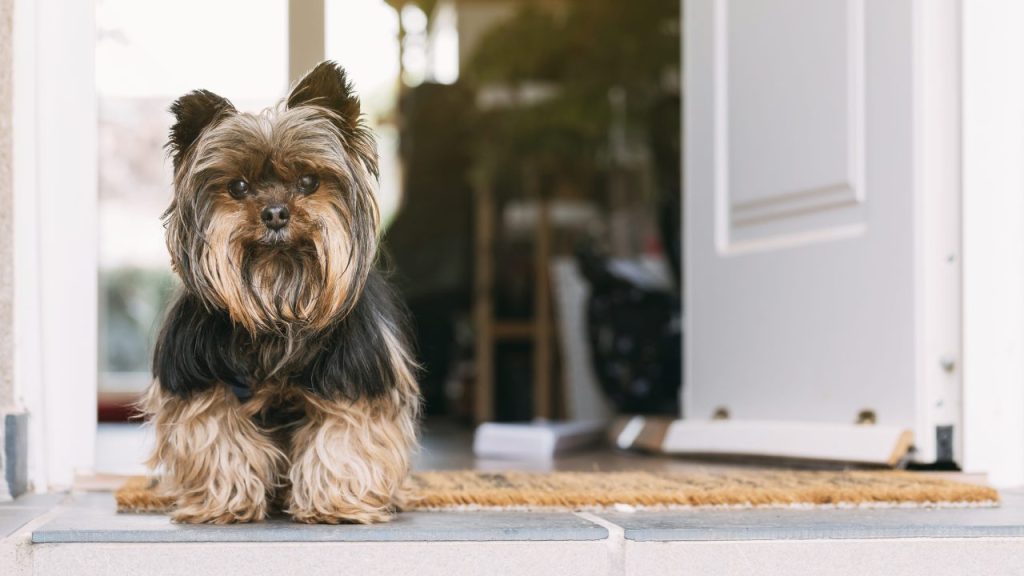It can be frustrating when your dog gets into something they shouldn’t or jumps up on a guest. Luckily, there are a few tips and tricks you can use to help ensure your dog stays well-behaved, great for new and experienced pet parents alike. And with these great tricks, you’ll have a well-behaved dog in no time!
Why it’s important to have a well-behaved dog
So, why is having a well-mannered dog important, and is it different from just teaching your dog some tricks? While tricks like “Sit up” or “Play dead” are great for showing off, they don’t do much to help with your dog’s overall behavior. By practicing commands such as “Wait” or “Leave it”, you can teach your dog behaviors that help with impulse control, problem chewing, and general interactions. And, if your dog understands what you want from them, they’ll be less likely to engage in destructive or potentially harmful behaviors.
Wait
The command “Wait” is very similar to “Stay” in that it has your dog sitting and waiting for you. However, “Wait” is a much less formal command, and often one used when you don’t want your dog to rush ahead onto the street or out a door.
With your dog on a leash, start by asking them to sit beside you. Then, ask them to “Wait” and count to five. If your dog remains seated next to you the entire time, praise and offer a high-value reward, such as some lunch meat. From there, you can begin to increase the duration your dog sits beside you. Other ways to work on “Wait” include adding some distance from your dog by walking away, or training in different locations such as on sidewalks and at doorways.
Go to your bed
When you need your dog to settle down and relax or stay out from underfoot, you’ll want to use “Go to your bed”. This is a great command for moving a dog to a safe place where they can rest and relax without getting in the way. This trick also is beneficial as part of your routine, such as when it’s time to crate your dog when leaving or going to sleep for the evening.
You will work in steps with this command. First, bring your dog over to the bed. If they sniff or show interest, praise and reward. Next, ask your dog to lie down on the bed. From there you can move a few feet away and point to the bed, asking your dog to “Go to your bed”. You can also lead them over with a treat as you do this. If they approach or show interest, reward. And if they step onto it or lie down, give a BIG reward and lots of praise!
Sit at the door
While this may seem similar to ‘Wait”, this command is beneficial for greeting guests at the door. It teaches your dog that they are given attention when calm and sitting politely, rather than getting too excited or jumping up.
Start by having your dog sit beside you while on a leash. If you have a friend with you, they can stand outside and practice knocking on the door and entering. If you’re alone, you can practice by opening the door yourself. Then, slowly start opening the door. If your dog jumps up, close the door and ask your dog to sit again. Once they can stay seated until the door is fully opened, praise and give some treats! From there, expand on this by having a person walk in or greet your dog while seated — taking the same gradual steps.
Take it gently
While puppies are the biggest offenders of accidental nips, adult dogs may still take a treat too harshly for tiny hands. Teaching your dog to “Take it gently” can help. Start by placing a treat in your hand and balling it into a fist. Let your dog sniff, and wait it out if they try to nibble or paw at the treat. Once they are calm, open your palm and let them take the treat. It’s also a good idea to teach your children this same technique, as offering treats with a cupped palm can help protect their fingers.
Leave it
The opposite of taking a treat, “Leave it” can prevent your dog from picking up items they shouldn’t. This can include dropped medications, pieces of food, or even items found on your walk. It’s important to not give your dog the treat you are working with while training “Leave it” so that they learn it’s not OK to pick up the item once you’re done.
Start by sitting on the floor and placing a treat on the ground beside you. Quickly cover it with your hand and ask your dog to “Leave it”. They may paw or chew at it for a few moments. Once they get bored, step away, or stop interacting, praise and reward them with a different treat.
These tricks can help when training a well-behaved dog. If you’re looking for additional training help, check out the fundamental guidelines for training dogs, as well as positive reinforcement training methods. Or, teach some fun tricks including 10 tricks you can teach any dog.










